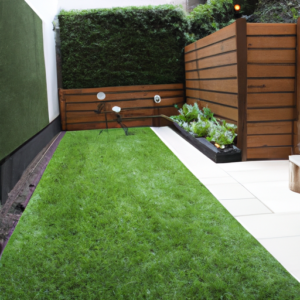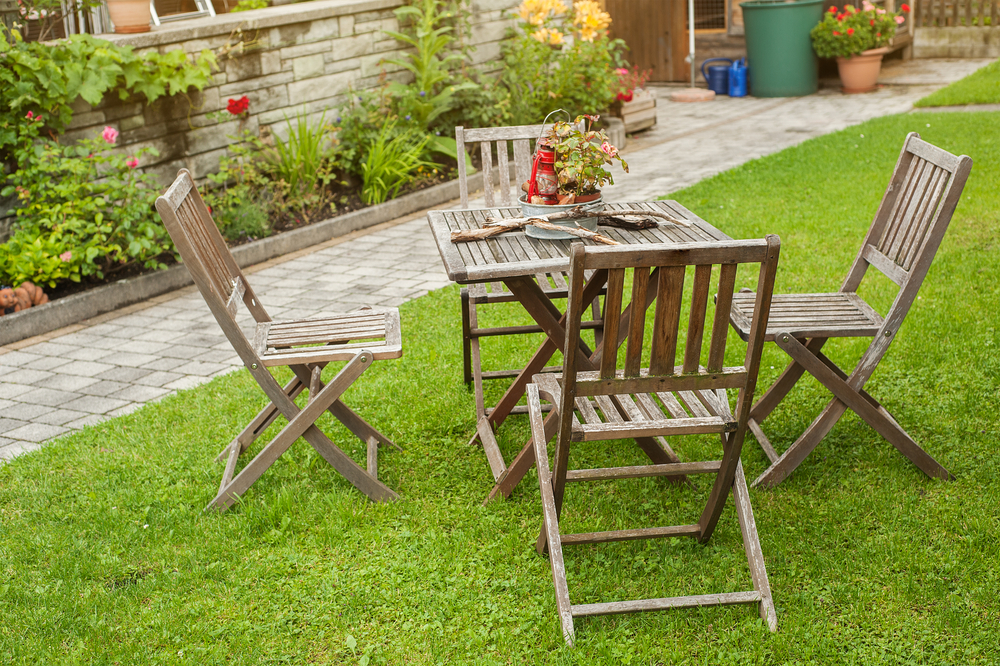Last Updated on February 1, 2023
It’s a common problem for homeowners with artificial grass: how do you keep it looking lush and fluffy? Sure, replacing the turf is an option, but that can be expensive. Instead of spending your hard-earned money on a new lawn, why not try to fluff up artificial grass instead? In this guide, we’ll show you four simple steps – cleaning it up, brushing it out, adding some weight and keeping cool – so that your fake turf looks as good as ever. Get ready to turn those flat blades into luscious locks; let’s get started learning how to fluff up artificial grass.
Table of Contents:
Clean It Up
Cleaning artificial grass is an important part of maintaining a beautiful lawn. Without regular cleaning, the synthetic turf can become matted and discoloured, leading to an unappealing appearance. Fortunately, with just a few simple steps, you can keep your artificial grass looking its best.
Remove Debris
The first step in cleaning artificial grass is to remove any debris that has accumulated on it. This includes leaves, twigs, dirt clumps and other items that have fallen onto the turf’s surface. You may need to use a rake or broom to loosen up any stubborn debris before sweeping it away with a hand-held vacuum cleaner or leaf blower. Be sure not to use too much force when removing debris, as this could damage the fibres of your artificial grass.
Rinse With Water
Once all the debris has been removed from your artificial grass, you should rinse it down with water using either a garden hose or pressure washer set at low-pressure settings (under 1000 psi). Make sure that you cover every area evenly so that no spots are missed out during the rinsing process. Allow some time for the water to soak into each blade of synthetic turf before moving on to fluffing up your lawn afterwards.
Fluff Up Your Lawn
After rinsing off your artificial grass and allowing enough time for it to dry out completely (this usually takes around 24 hours), you will be ready to start fluffing up your lawn again. To do this properly without damaging any blades of synthetic turf, make sure that you brush against each individual blade in one direction only – going back over them multiple times if necessary until they look nice and fluffy once more.
Brush It Out

Brushing out artificial grass is an important part of keeping it looking its best. Regular brushing helps to keep the blades standing upright and prevents them from becoming matted down or flattened. It also helps to remove debris, such as leaves, twigs, and other materials that can accumulate over time.
The best tool for brushing out artificial grass is a stiff-bristled brush with long handles, so you don’t have to bend over too much while working on your lawn. You should start by using short strokes in one direction across the entire length of the grass before switching directions and repeating this process until all areas are brushed thoroughly. This will help ensure that every blade gets evenly distributed pressure when being brushed out, resulting in a more uniform look overall.
It’s recommended that you brush your artificial grass at least once per month, but if you live in an area with lots of trees or other sources of debris, then it may be necessary to do it more often than that. If you notice any clumps forming due to matting, these should be removed immediately, as they can cause damage if left unchecked for too long. Additionally, if your lawn has been exposed to heavy rain or snowfall, then it may need additional attention since water can cause the blades to flatten even further than usual without proper maintenance afterwards.
Add Some Weight
Adding weight to artificial grass is an important step in keeping it looking lush and vibrant. It helps the turf stay fluffy, which gives it a more natural look and feel. One of the most popular ways to add weight to artificial grass is by using sand or rubber mats.
Sand can be spread over the surface of your lawn before laying down your turf, providing extra stability for your grass blades. The sand also helps keep moisture away from the roots of your turf, helping prevent mould growth and discolouration. Additionally, sand provides traction when walking on wet surfaces, so you don’t slip and slide around like you would with regular grass.
Rubber mats are another great way to add weight to artificial grass without having to use a lot of material or take up too much space in your yard. Rubber mats come in various sizes and thicknesses, so you can find one that fits perfectly into any area where you need extra support for your turf. They provide excellent cushioning for feet as well as protection against wear and tear from pets or children playing on the lawn. Plus, they won’t absorb water as sand does, so there’s no risk of flooding if it rains heavily.
Both options offer great benefits when adding weight to artificial grass, but ultimately it comes down to personal preference when deciding which one works best for you and your yard needs. Ultimately, both options will help keep your artificial lawn looking lush all year round.
Keep It Cool

As the summer months approach, it’s important to keep your artificial grass cool and comfortable. The sun can be relentless in the UK during these months, so it’s essential that you take steps to ensure your artificial grass is not exposed to too much heat. Here are some tips on how to keep your artificial grass cool:
Water It Down
One of the most effective ways of keeping your artificial grass cool is by using a garden hose or sprinkler system. This will help reduce the temperature of the turf and make it more pleasant for you and your family when spending time outdoors. Make sure you water down regularly throughout hot days, as this will prevent overheating from occurring.
Shade It Up
If possible, try to provide shade over areas where people tend to sit or play on the turf – such as patio furniture or outdoor play equipment – as this will help keep those areas cooler than other parts of the lawn, which may be exposed directly to sunlight for long periods of time. You could use umbrellas, trees or shrubs to create shade if necessary but remember that these won’t last forever, so make sure they’re replaced regularly.
Add Weight
Adding weight onto certain parts of your artificial grass can also help with cooling it down; things like sandbags, bricks, or even large stones placed strategically around problem areas can all work wonders at reducing temperatures significantly. Just make sure whatever material you choose isn’t going to cause any damage before placing them onto the surface itself – especially if children are playing there often.
Finally, brushing out any dirt particles which have built up over time can also help with cooling down an area; use a stiff brush (or power washer) and sweep away any debris which has gathered around blades of fake grass. This should result in improved air circulation and, thus, lower temperatures overall.
Conclusion
By following these four simple steps, you can easily fluff up your artificial grass and make it look as good as new. Cleaning it regularly, brushing out any debris, adding some weight to keep the blades standing upright and keeping it cool are all key factors in maintaining a lush lawn that looks great year-round. With just a little bit of effort, you can ensure that your artificial grass stays fluffy and beautiful for years to come.
Paul is the type of person who never met a problem he couldn’t fix. He can always be found tinkering with something in his house, even if it isn’t broken! His tips and tricks are often shared on our site. He’s the one you call when something breaks because he has been known to improvise fixes for everything from leaky faucets to malfunctioning dryers.

